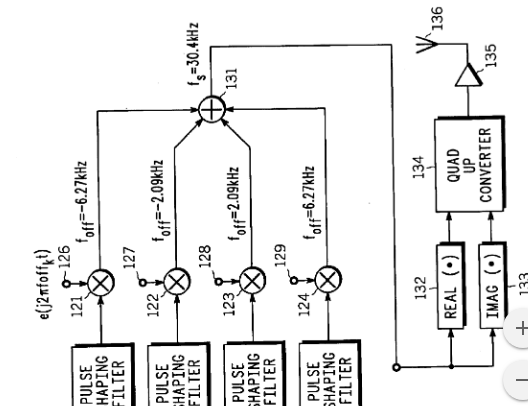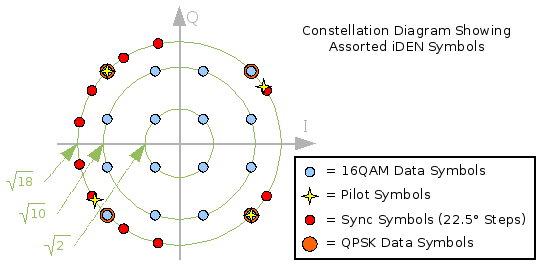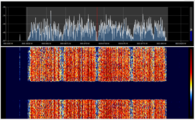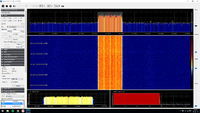Integrated Digital Enhanced Network (iDEN)
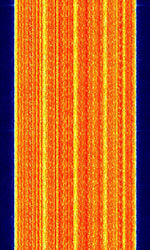 | |
|---|---|
| Frequencies | 806 MHz,824 MHz,851 MHz,869 MHz |
| Frequency Range | 806 MHz - 869 MHz |
| Mode | NFM |
| Modulation | QAM,TDMA |
| ACF | — |
| Emission Designator | — |
| Bandwidth | 18.5 kHz |
| Location | Worldwide |
| Short Description | iDEN is a TDMA-based digital wireless standard developed by Motorola. It is a type of trunked radio with cellular phone benefits. |
| I/Q Raw Recording | Download file |
| Audio Sample | |
iDEN is a TDMATime Division Multiple Access-based digital wireless standard designed to work in special frequencies originally designated for analog Specialized Mobile Radio (SMR) networks. It is a type of trunked radio with cellular phone benefits. iDEN was invented by Motorola, who remains the primary manufacturer of iDEN devices. iDEN is considered to be a ESMR (Enhanced Specialized Mobile Radio) network. iDEN uses TDMATime Division Multiple Access with QAMQuadrature Amplitude Modulation Modulation for data.
The iDEN system uses M16-QAMQuadrature Amplitude Modulation modulation, a Motorola proprietary digital format utilizing M16-QAMQuadrature Amplitude Modulation modulation on four subcarriers. This format involves both amplitude and phase modulation.
Each main signal is divided into 4 sub-channels. Each sub-channel is about 4.5 kHzKiloHertz (kHz) 10^3 Hz wide. The entire channel's operating bandwidth is 25kHz, although the signal itself takes only 18.5 kHzKiloHertz (kHz) 10^3 Hz.
From a U.S. regulatory perspective iDEN networks are not considered cellular phone systems and are licensed to operate on 800MHz SMR frequency allocations (851 - 869 MHzMegaHertz (MHz) 10^6 Hz band for towers; 806 - 824 MHzMegaHertz (MHz) 10^6 Hz for mobiles). Thus they do not enjoy any of the special protections afforded cellular phone systems transmissions. So while a private citizen is not permitted to monitor cellular phone traffic it remains perfectly legal to monitor exactly the same type of traffic on an iDEN network.
Outside the U.S. iDEN may be known as DIMRS (Digital Integrated Mobile Radio Service).
iDEN cannot be decoded due to proprietary nature.
iDEN was previously operated by Nextel in the U.S. After the merger with Sprint Corporation in 2005, it has been decommissioned and most of the spectrum is currently in use for 4G LTE (Band 26)
Some iDEN Data Transmission Characteristics[edit]
The transmission format is designed for 25 kHzKiloHertz (kHz) 10^3 Hz channel spacing. Data is transmitted using four 16QAM modulated sub-channels; with each sub-channel carrying 4000 symbols / second we end up with a total raw bit rate of 64 kbits/sec. The channel throughput then comes out to very roughly 3 bits/sec/HzHertz (Hz), unit of frequency, defined as one cycle per second (1 Hz)..
The following shows a typical iDEN spectrum:
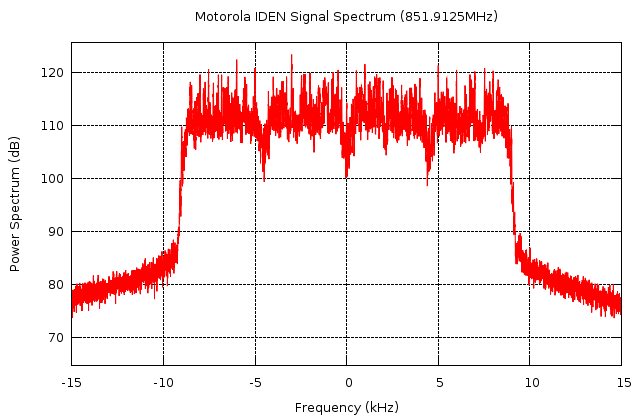
Above: iDEN signal spectrum. The individual sub-channels spaced at ±2250 and ±6750 HzHertz (Hz), unit of frequency, defined as one cycle per second (1 Hz). relative to the center of the RFRadio Frequency channel are readily apparent.
One designates the four sub-channels LO (Left Outer), LI (Left Inner), RI (Right Inner), and RO (Right Outer) in order of increasing frequency as shown in the following table:
| Sub-Channel | Offset relative to carrier center |
|---|---|
| LO | - 6750 HzHertz (Hz), unit of frequency, defined as one cycle per second (1 Hz). |
| LI | - 2250 HzHertz (Hz), unit of frequency, defined as one cycle per second (1 Hz). |
| RI | + 2250 HzHertz (Hz), unit of frequency, defined as one cycle per second (1 Hz). |
| RO | + 6750 HzHertz (Hz), unit of frequency, defined as one cycle per second (1 Hz). |
Symbol filtering uses the Root Raised Cosine (RRC) response with roll-off factor α = 0.2. The 4000 symbol / second rate is low enough that one does not have to worry about channel equalization.
The patents describe the signal as centered on 30.4 kHzKiloHertz (kHz) 10^3 Hz IF, and from that and other information we can derive that there is about 400 HzHertz (Hz), unit of frequency, defined as one cycle per second (1 Hz). between each pair of channels (each channel taking up 4000 HzHertz (Hz), unit of frequency, defined as one cycle per second (1 Hz). with 250 HzHertz (Hz), unit of frequency, defined as one cycle per second (1 Hz). on either side for spacing.)
iDEN Frame Structure[edit]
iDEN data is transmitted in 15ms time slots. The precise start of a time slot can be determined by detecting the sync symbol sequence. Demodulation of data symbols is assisted by pilot symbols of known magnitude and phase. All together a typical iDEN outbound slot looks like:

Above: Arrangement of an iDEN frame showing sync, pilot, and data symbols. Pilot demodulation techniques and slot structures are described in U.S. Patents 5,519,730; 6,873,614; and 6,909,761.
Note that sync bursts can also serve as pilots and therefore an iDEN frame is always terminated with a sync burst (even if there is no following frame). Also note that split outbound slot types transmit QPSKQuadrature Phase-Shift Keying (2 bits per symbol) data on some pilot symbols; the pilot symbols can still be used as pilots since the expected magnitude is constant and the expected phase can be easily derived from the received symbol.
While all sync and pilot symbols have the same (maximum) amplitude they will have varying phases. Essentially these symbols can be viewed as lower order phase modulated symbols:
| Symbol # | Phase (°) | Symbol # | Phase (°) | Symbol # | Phase (°) | Symbol # | Phase (°) |
|---|---|---|---|---|---|---|---|
| Sub-channel RO | Sub-channel RI | Sub-channel LI | Sub-channel LO | ||||
| 0 | -31 | 0 | +102 | 0 | -102 | 0 | +31 |
| 1 | -31 | 1 | -123 | 1 | +123 | 1 | +31 |
| 2 | +149 | 2 | -168 | 2 | +168 | 2 | -149 |
| 5 | +34 | 9 | -45 | 9 | +45 | 5 | -34 |
| 13 | -146 | 17 | +135 | 17 | -135 | 13 | +146 |
| 21 | +34 | 25 | -45 | 25 | +45 | 21 | -34 |
| 29 | -146 | 33 | +135 | 33 | -135 | 29 | +146 |
| 37 | +34 | 41 | -45 | 41 | +45 | 37 | -34 |
| 45 | -146 | 49 | +135 | 49 | -135 | 45 | +146 |
| 53 | +34 | 57 | -45 | 57 | +45 | 53 | -34 |
| 60 | -121 | 60 | -168 | 60 | +168 | 60 | +121 |
| 61 | -121 | 61 | -33 | 61 | +33 | 61 | +121 |
| 62 | +59 | 62 | -78 | 62 | +78 | 62 | -59 |
Sync symbols are shown in red, pilot symbols in yellow. Orange symbols may also be pilots carrying QPSKQuadrature Phase-Shift Keying (2 bits per symbol) data. At this point I'm not sure if the second set of sync symbols apply, and it may be possible to simply discard the pilot symbols in practice in software with such a low symbol rate for an SDR to decode.
Symbol locations are numbered from 0 (first sync symbol position on left) through 59 (last data symbol position on the right).
Technically symbols 60, 61, 62 belong to the next time-slot but they are shown above because they can be used as pilot references too. Note the phase shifts caused by 60 symbol times (60 * 0.25ms = 15ms) on the 2250Hz and 6750Hz sub-carrier frequency offsets come out to plus and minus 90 degrees. When we move to the next iDEN slot 15ms later symbols 60, 61, and 62 slide to positions 0, 1, and 2 with the phases as shown above.
Data symbols carry 4 bits of information in a 16QAM constellation. Putting it all together we have:
Above: iDEN sub-channel data symbol constellation with circles representing one of three possible symbol amplitudes. Sync and pilot symbol locations also shown.
Samples[edit]
Here are each of the subchannels (From left to right):
| Channel 1 | Channel 2 |
|---|---|
| Channel 3 | Channel 4 |
Each is slightly different.
Additional Samples[edit]
USBUpper Side Band Modulation (Radio, referring to reception and modulation mode)Universal Serial Bus (Computer, referring to USB Ports and cables) full signal:
USBUpper Side Band Modulation (Radio, referring to reception and modulation mode)Universal Serial Bus (Computer, referring to USB Ports and cables) single channel:
Baseband recording:
Frequencies[edit]
In the United States, iDEN is allocated 806 MHzMegaHertz (MHz) 10^6 Hz - 824 MHzMegaHertz (MHz) 10^6 Hz and 851 MHzMegaHertz (MHz) 10^6 Hz - 869 MHzMegaHertz (MHz) 10^6 Hz.
Consolidated Edison in New York City uses iDEN for trunked radio. Their frequencies can be found here.
